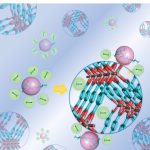While natural wildfires have been the principal landscape disturbance in boreal forests for the last 6000 years, warming climate and land management have increased the frequency and severity of wildfires in the western US. Wildfires can induce important ecological benefits to many ecosystems; however, severe wildfires may threaten soil health, water and air quality, and ecosystem resilience. Although post-fire losses of soil organic matter (SOM) during combustion are expected, little is known about how wildfires alter organic nitrogen (N) forms. The availability of N is important for microbial metabolism; therefore, transformations to N-containing substrates with fire may have crucial implications for microbially-mediated processes. Molecular characterization of pyrogenic C and N is necessary for predicting how fires influence the biogeochemical cycling of C and N in impacted soils. Here, we aimed to characterize the specific changes to N chemistry within fire-impacted beaver ponds and with increasing fire severity in a lodgepole pine forest in Colorado, USA. For both studies, organic matter was extracted for chemical analyses including Fourier Transform Ion Cyclotron Resonance Mass Spectrometry (FT-ICR MS). Within the beaver ponds, we observed greater abundance of N-containing compounds, lower C/N and O/C, and increased organic matter aromaticity within the ponds, potentially indicating localized preservation of pyrogenic organic matter driven by the processing of more labile compounds. Within fire impacted soils, we report a relative increase in the organic N component with burn, demonstrating that fire promotes a shift in SOM chemical composition that may be indicative of the specific transformations that soils undergo during heating. SOM N composition is strongly linked to fire severity, and, with increasing severity, SOM becomes more N-rich, resulting in a lower C/N ratio in high severity soils relative to low and moderate burns. Together, these findings provide molecular insights into the formation and transformation of pyrogenic organic matter and enhance our understanding of N cycling in post-fire environments, with key implications for forest recovery following severe wildfire.



